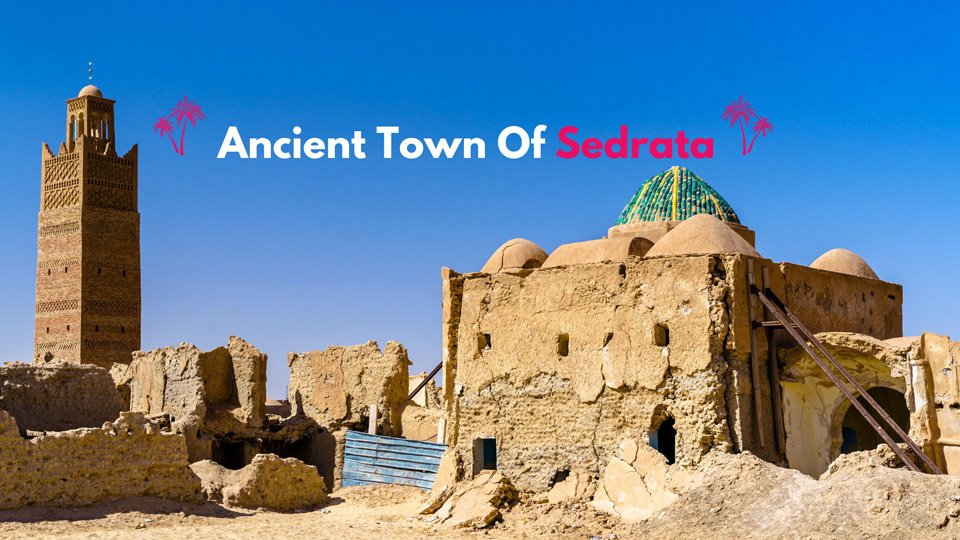The Ancient Town of Sedrata: Preserving a Cultural Heritage in Peril
Sedrata, an ancient town located approximately ten kilometers southwest of Ouargla, Algeria, stands as a testament to the region’s rich historical and cultural legacy. Despite its significance, Sedrata faces numerous threats from both natural and human factors that jeopardize its preservation and potential as a cultural landmark.
Historical Significance
Sedrata dates back to the 10th century and spans an area of around 2 km². Over the years, archaeological excavations have revealed significant structures, including a unique square-shaped mosque with twenty domes supported by twenty pillars. This architectural marvel, along with surrounding buildings, was designed to withstand the harsh Saharan climate, reflecting the ingenuity of its ancient inhabitants.
Current Challenges
The site is under constant threat from natural hazards such as silting, precipitation, and landslides. These elements erode the site’s structures and artifacts, accelerating their degradation. Additionally, human activities, including vandalism, illegal dumping, and unauthorized excavations, further endanger the remnants of this historical site.
Efforts for Preservation
Recognizing the urgency, Abdelhak Bennour from the University of El-Oued emphasized the necessity of regulatory mechanisms to safeguard Sedrata. During a recent heritage celebration event, he proposed several measures, including:
- Awareness Campaigns: Raising public awareness about the historical and cultural value of Sedrata.
- Preventive Actions: Developing plant cover to mitigate silting and creating green belts around the site to protect it from further environmental damage.
- Infrastructure Development: Constructing a protective fence around the site and ensuring controlled access to prevent unauthorized activities.
Strategic Proposals
The local heritage association has put forward a comprehensive plan to revive and promote Sedrata as a cultural and tourist destination:
- Cultural Archaeological Park: Establishing a park that highlights the site’s archaeological significance and offers educational experiences for visitors.
- Visitor Facilities: Developing visitor reception points and amenities to enhance the tourist experience.
- Ongoing Exploration: Encouraging continuous archaeological research and excavation to uncover and preserve more of Sedrata’s historical treasures.
Government and Community Involvement
To ensure the site’s rehabilitation, the Algerian government has included two key projects under the Special Southern Development Fund. These projects focus on improving access to the site and providing essential water resources. Such infrastructural developments are critical for both preservation efforts and making the site more accessible to researchers and tourists.
Local authorities and cultural organizations play a pivotal role in these efforts. By collaborating with universities, heritage experts, and international archaeological bodies, they aim to implement sustainable preservation practices and integrate Sedrata into the region’s socio-economic development plans.
The Role of International Collaboration
International collaboration is essential for the successful preservation of Sedrata. The involvement of global archaeological bodies can bring in the necessary expertise and resources.
Programs such as the Site Preservation Grant from the Archaeological Institute of America provide financial support for the conservation of endangered archaeological sites worldwide. Additionally, the exchange of knowledge and best practices through international conferences and collaborations can enhance the effectiveness of local preservation efforts.
Technological Integration in Preservation
The use of modern technology can significantly aid in the preservation of Sedrata. Techniques such as 3D scanning and digital modeling can document the current state of the site and monitor changes over time. These digital records can be invaluable for restoration efforts and for creating virtual tours that can raise global awareness and appreciation for Sedrata’s heritage without causing physical wear and tear on the site.
Community Engagement and Education
Engaging the local community in preservation efforts is crucial. Educational programs and workshops can instill a sense of pride and responsibility in local residents towards their heritage. By involving the community in site maintenance and tourism activities, sustainable preservation can be achieved while also providing economic benefits to the local population.
Conclusion
Sedrata’s preservation is not just about protecting physical structures but also about safeguarding a cultural narrative that spans centuries. The combined efforts of governmental bodies, local communities, and international organizations are essential to revitalize this ancient town. By addressing both natural and human threats, Sedrata can emerge not only as a preserved archaeological site but also as a beacon of cultural heritage for future generations.
In conclusion, the preservation of Sedrata requires a multifaceted approach, involving regulatory measures, public awareness, infrastructural development, and continuous research. These efforts will ensure that Sedrata remains a vital part of Algeria’s historical and cultural landscape, providing insights into the past and enriching the present.
For further information on Sedrata and the preservation efforts, you can explore resources from the Archaeological Institute of America and other cultural heritage organizations.

